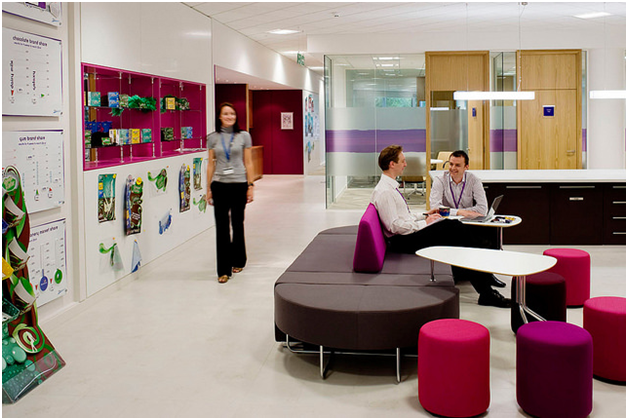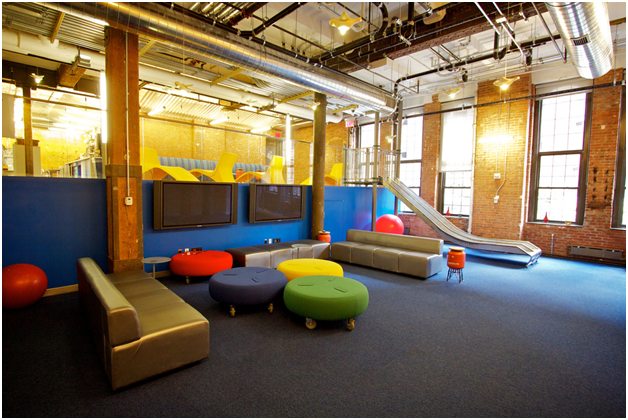
As the way we work changes, so do the places we work in; the offices of a decade ago are unrecognisable today. Now, they are places where staff not only work but relax, recharge their batteries and focus on their health and wellbeing as well as their next project.
Changes for 2018
WeWork and Google were among the first to embrace this change in office design, which has since gone mainstream. In 2018, further changes in office design are designed are expected, including:
– Flexibility: Thanks to technology, people no longer need to sit at a desk to get things done. Laptops, tablets and mobile phones mean they can work anywhere, leading to a move away from traditional office layouts and toward people working wherever they feel comfortable.
– Collaboration: In the past, people met in meeting rooms, sitting around a table in a formal setting. Today, people don’t need to be in the same office to meet, and when they do, companies are moving away from the conference room look toward something more relaxed with comfortable seating and an open feel.
– Openness: Gone are the cubicles of previous decades. Companies are tearing these down and creating a feeling of separation with filing cabinets, plants and panels made from natural materials such as bamboo, making every space a collaborative one.
– Relaxing spaces: As companies focus more on staff wellbeing, they are creating spaces where they can relax, spend time with colleagues, and recharge their batteries after a stressful day. Breakout spaces are replacing traditional lunch rooms, and they look more like a high street café than a place of work.
The idea behind these changes is to boost creativity and productivity and make work a place people want to go. Making these changes can, however, be disruptive, and businesses are looking to companies such as http://gnccontractservices.com/, a Cheltenham Carpet Cleaning Company, to help make the changes as smooth as possible.
What’s next for office design?
With flexible working, the rise of the gig economy and the increasing use of technology, the lines between home and work will continue to blur. Making workplaces attractive to employees will become increasingly important. Making spaces warm, welcoming and flexible will be essential, allowing companies and their employees to adapt quickly to business needs.



